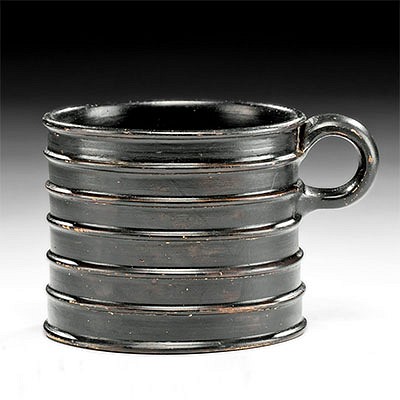19th C. Russian Virgin of the Kiss Mother of God Icon
Lot 126
About Seller
Artemis Gallery
686 S Taylor Ave, Ste 106
Louisville, CO 80027
United States
Selling antiquities, ancient and ethnographic art online since 1993, Artemis Gallery specializes in Classical Antiquities (Egyptian, Greek, Roman, Near Eastern), Asian, Pre-Columbian, African / Tribal / Oceanographic art. Our extensive inventory includes pottery, stone, metal, wood, glass and textil...Read more
Categories
Estimate:
$2,000 - $3,000
Absentee vs Live bid
Two ways to bid:
- Leave a max absentee bid and the platform will bid on your behalf up to your maximum bid during the live auction.
- Bid live during the auction and your bids will be submitted real-time to the auctioneer.
Bid Increments
| Price | Bid Increment |
|---|---|
| $0 | $25 |
| $300 | $50 |
| $1,000 | $100 |
| $2,000 | $250 |
| $5,000 | $500 |
| $10,000 | $1,000 |
| $20,000 | $2,500 |
| $50,000 | $5,000 |
| $100,000 | $10,000 |
| $200,000 | $20,000 |
About Auction
By Artemis Gallery
Mar 12, 2020
Set Reminder
2020-03-12 10:00:00
2020-03-12 10:00:00
America/New_York
Bidsquare
Bidsquare : Ancient / Ethnographic Around The World
https://www.bidsquare.com/auctions/artemis-gallery/ancient-ethnographic-around-the-world-4957
Ancient art from Egypt, Greece, Italy and the Near East, as well as Asian, Fossils, Pre-Columbian, Native American, African / Tribal / Oceanic, Spanish Colonial, Russian Icons, Fine art, much more! Artemis Gallery info@artemisgallery.com
Ancient art from Egypt, Greece, Italy and the Near East, as well as Asian, Fossils, Pre-Columbian, Native American, African / Tribal / Oceanic, Spanish Colonial, Russian Icons, Fine art, much more! Artemis Gallery info@artemisgallery.com
- Lot Description
Eastern Europe, Russia, ca. 19th century CE. A precious example of the Virgin of the Kiss Mother of God icon, a subject that derives from a prototype purportedly painted by Saint Luke at Ephesus, and believed to be the first icon depicting the Virgin Mary that Prince Vladimir brought to Kiev in 988, finely painted in egg tempera, gesso, and gold leaf on linen and wood. This half-length composition amplifies the palpable emotion of their loving gazes and by extension, the strong bond between mother and son. Departing from Italian icons in which Mary holds the Child to her breast with a single hand, in Russian icons like this example she embraces the baby Jesus with both hands. The figures in the margins are most likely patron saints of the church or individual who commissioned the icon. Size: 12" W x 14" H (30.5 cm x 35.6 cm)
Characteristic of a Mother of God icon, this piece presents the intensely expressive visages of Mary and baby Jesus, their pristine oval faces juxtaposed closely as the Child leans in to press his cheek against his mother’s - the Virgin’s protective, maternal gaze revealing a bittersweet awareness of her son’s fate, returned by Jesus’ sweet, trusting innocence.
Icons (icon means "image" in Greek) are sacred objects within the Eastern Orthodox Christian tradition. Found in homes as well as churches, these painted images depict holy persons and saints as well as illustrate scenes from the Scriptures. Icons are not worshiped, but are instead venerated for their ability to focus the power of an individual's prayer to God. As such they are truly "windows into heaven."
Provenance: private Francis & Lilly Robicsek Collection, Charlotte, North Carolina, USA, acquired second half of the 20th century
All items legal to buy/sell under U.S. Statute covering cultural patrimony Code 2600, CHAPTER 14, and are guaranteed to be as described or your money back.
A Certificate of Authenticity will accompany all winning bids.
We ship worldwide and handle all shipping in-house for your convenience.
#119439This icon was made from two panels of wood which have separated a bit as shown, but the icon is still in generally stable condition. Nice craquelure to the composition commensurate with age. Losses to peripheries as shown; some touch up to the painted borders and lettering. Back slats present on verso; one has been re-glued. Inactive insect loss visible on verso. Still a strong example that with some restoration would be a treasure in any collection.Condition
- Shipping Info
-
All shipping is handled in-house for your convenience. Your invoice from Artemis Gallery will include shipping calculation instructions. If in doubt, please inquire BEFORE bidding for estimated shipping costs for individual items.
-
- Buyer's Premium



 EUR
EUR CAD
CAD AUD
AUD GBP
GBP MXN
MXN HKD
HKD CNY
CNY MYR
MYR SEK
SEK SGD
SGD CHF
CHF THB
THB















